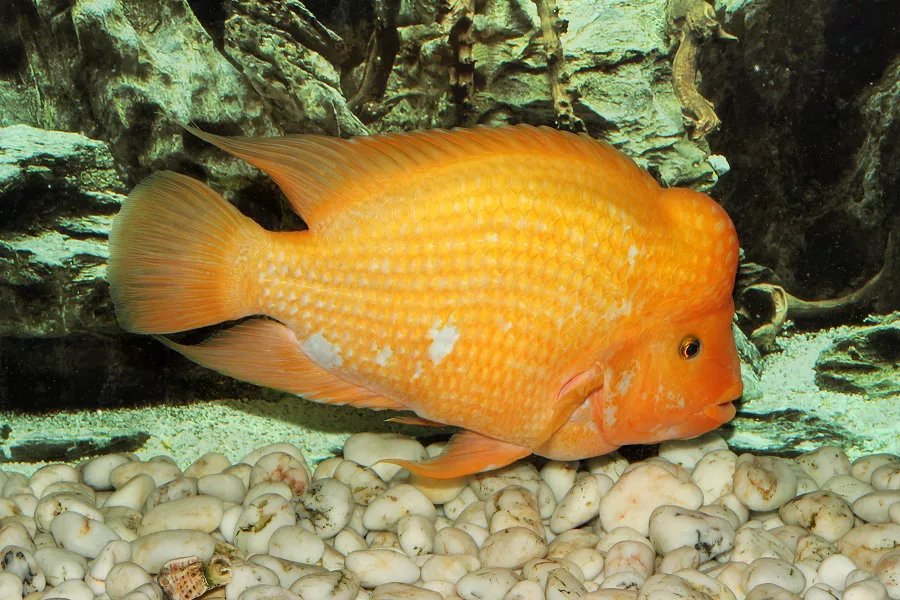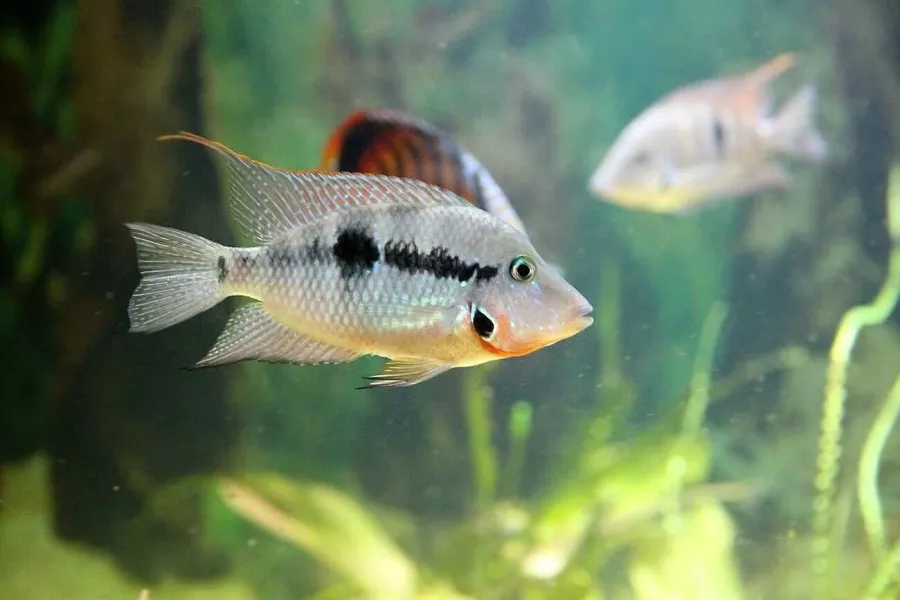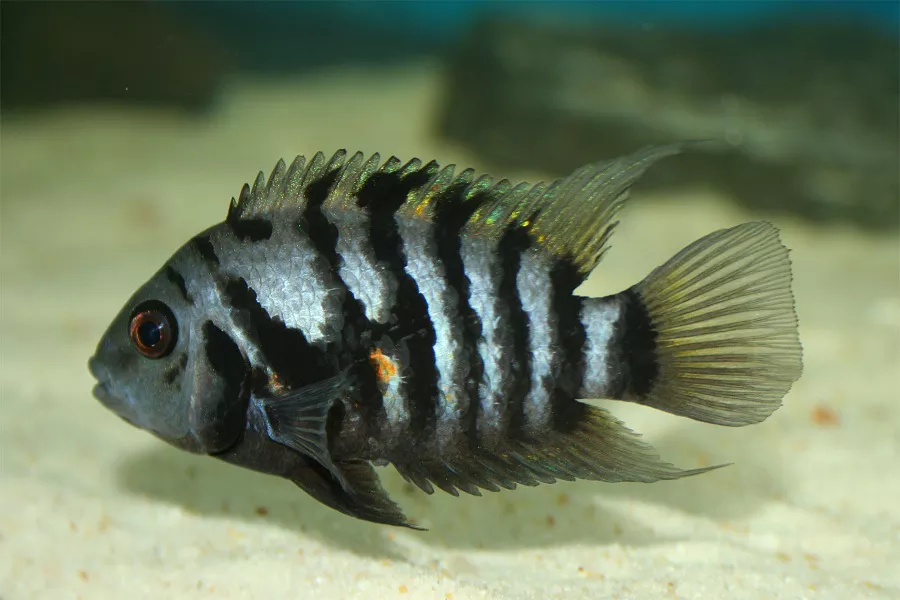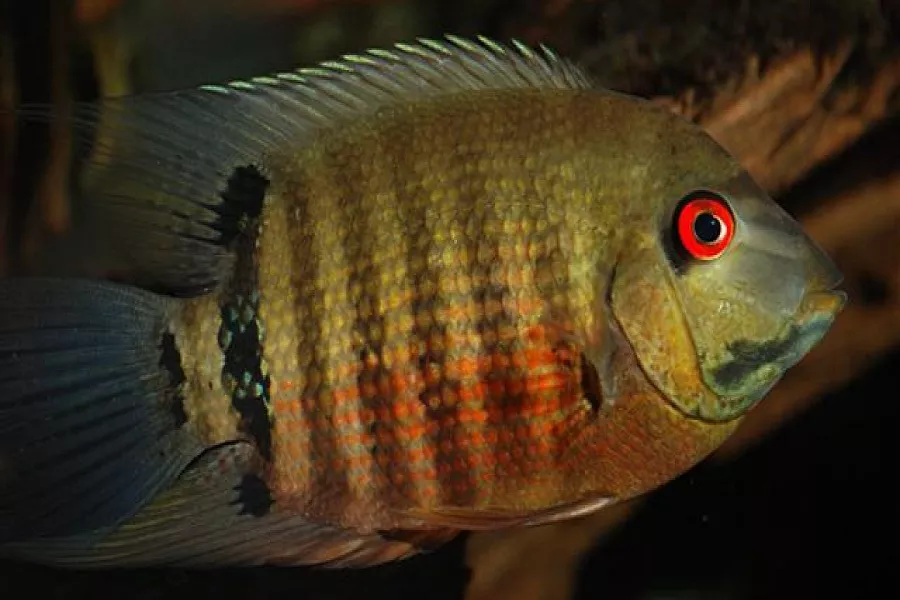What is amphilophus citrinellus?
Amphilophus citrinellus, tropical fish, fish scientific name: Cichlasoma citrinellum, alias longevity head, longevity fish, native to Nicaragua, Costa Rica and other places in Central America. The head is large, and there is an obvious round sarcoma on the top of the head, which is different. Body color is pink, juveniles are gray-black, and adults become fiery red, with variable body color, sometimes orange or yellow. The feeding water temperature is 22-28 ℃, and the bait includes fish and insects, water earthworms, small live fish and so on. The breeding water temperature is 27-29°C, the water quality is weakly acidic and soft water, the broodstock is sexually mature for 6-8 months, the male fish has large sarcoma on the top of the head, the body color is bright red like fire, and the female fish body color is lighter, each spawning 200-500 eggs , with smooth rock or marble slabs for nesting.
What does amphilophus citrinellus look like?
Body length 20-30cm, body shape similar to goldfish. The head is large, and there is an obvious round sarcoma on the top of the head, which is different. Body color is pink, juveniles are gray-black, and adults become fiery red, with variable body color, sometimes orange or yellow. Its high forehead is like an old birthday star, and it has a rough personality and can only be raised with large fierce fish. In Southeast Asia, some people keep flamingos (shou), three tigers (lu), and dragon fish (fortune) in a tank, which is called “Fu Lu Shou”.
life habits of amphilophus citrinellus
The flamingo fish has a rough temperament and strong territorial awareness. Sometimes two fish can be seen biting each other, resulting in both losses. Therefore, the flamingo fish should not be mixed with small fish. Flamingo fish feed on fish and insects, water earthworms, small live fish, shrimp, etc. After artificial domestication, they can eat artificially formulated pelleted feed.
amphilophus citrinellus rearing
The breeding water temperature of Amphilophus citrinellus is 27~29℃, the water quality is weakly acidic and soft water, the broodstock is sexually mature in 6~8 months, the male fish has large sarcoma on the top of the head, and the body color is bright red like fire, while the female fish body color is lighter, with smooth rocks or marbles. Plate for birthing nest. After the male and female broodstock are familiar with the surrounding environment, they will take turns to peck the spawning plate with their beaks. After cleaning, the female fish will lay eggs against the spawning plate, and the male fish will release semen to fertilize it. Generally, after 40-60 minutes, the spawning is coming to an end. The female fish usually spawns 200 to 600 eggs each time. After the spawning is over, the spawning plate or the broodstock should be fished out in time. After 48 ~ 72d’, hatching, the larvae burst out of the membrane, and gradually fell off the spawning plate and landed on the bottom of the tank or the bottom of the pond. The newly hatched larvae carry the yolk sac. In the first 2-3 days, the larvae rely on the absorption of their own yolk sac to maintain life, and finally float up and swim to the surface. When the larvae swim to the surface one after another, the yolk sac will basically be absorbed. At this time, it is necessary to feed open bait in time, such as drowning water, small water fleas, etc., to ensure that the larvae can consume enough and palatable bait to survive. After another 7 to 10 days, rotifers, cladocerans and copepods can be fed, depending on the stocking density and water quality. Timely reduce the stocking density and carry out sub-cultivation.
Reminder: For more knowledge about tiger fish, arowana, australian lungfish, please pay attention to: mtedr.com, to provide you with types of aquarium fish and fish care.


























